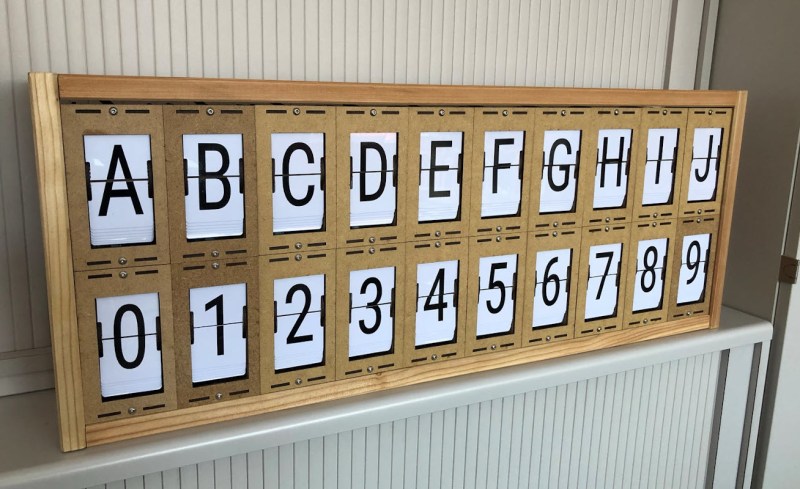LED and LCD displays are a technological marvel. They’ve brought the price of televisions and monitors down to unheard-of levels since the days of CRTs, but this upside arguably comes with an aesthetic cost. When everything is covered in bland computer screens, the world tends to look a lot more monotonous. Not so several decades ago when there were many sharply contrasting ways of displaying information. One example of this different time comes to us by way of this split-flap display that [Erich] has been recreating.
Split-flap displays work by printing letters or numbers on a series of flaps that are attached to a spindle with a stepper motor. Each step of the motor turns the display by one character. They can be noisy and do require a large amount of maintenance compared to modern displays, but have some advantages as well. [Erich]’s version is built out of new acrylic and MDF, and uses an Arduino as the control board. A 3D printer and CNC machine keep the tolerances tight enough for the display to work smoothly and also enable him to expand the display as needed since each character display is fairly modular.
Right now, [Erich]’s display has 20 characters on two different rows and definitely brings us back to the bygone era where displays of this style would have been prominent in airports and train stations. This display uses a lot of the basics from another split flap display that we featured a few years ago but has some improvements. And, if you’d prefer restorations of old displays rather than modern incarnations, we have you covered there as well.
Thanks to [Bob] for the tip!
















Quote [Bryan Cockfield] : “They can be noisy and do require a large amount of maintenance compared to modern displays …”
Maybe some needed maintenance but the slip flap clocks worked forever with zero maintenance.
I meant “split flap clocks”
Sheeesh, one more error and that could have been totally inappropriate.
I think it’s hard to compare a flip clock with a full display which usually has about 52 flaps per element.
Yeah, I think a slow moving clock display that changes one digit each minute, ten minutes or hour is quite different from something expected to change a 36 character flipper on demand at relatively high speed.
Quote from the article: “…and uses an Arduino as the control board.” There is no Arduino (hardware, software, tools) involved here: the build is using the NXP LPC845-BRK board plus the Lucerne University K22 (Kinetis K22FN512) board, and everything is written in C using Eclipse (NXP MCUXpresso IDE and SDK).
The mechanical design is from Scott Bezek which had been featured on Hackaday a while back: https://hackaday.com/tag/split-flap-display/page/2/
On an additional note: there has been some evolution of that build, and currently I have a 2×16 unit display running with a modified hardware.
The main board and ‘snap-offs’ designed as a “complete” circuit is sneaky – I love it.
That way it counts as ‘single board’ and it is below the usual 10×10 cm limit for which you get very cheap PCBs: so you can get 10 PCBs for a total of $5 (plus shipment, of course).
That flap sound just can’t be beat.
So cool! I had a clock radio with this kind of display when I was a kid. It sounded just like yours!
Makes me wonder what a Chinese split-flap display would look/sound like? By the way the Chinese govt. says you need to know 2000 characters to be basically literate, that would be some display!
So cool! I had a clock radio with this kind of display when I was a kid. It sounded just like yours!
Great project, reminds me of waiting for my train in the Düsseldorf Hauptbahnhof in the 90s where they had a big display like this displaying all the departures. It was mesmerizing to watch it update! Maybe it’s still there? I don’t know, but it was a very specific memory for me. I know there is a commercial version of the split flap display for purchase now, I’ve seen lots of ads on instagram for it. it was surprisingly expensive, but after seeing how these work in your well documented post, I understand that they’re relatively complicated. Nice job!